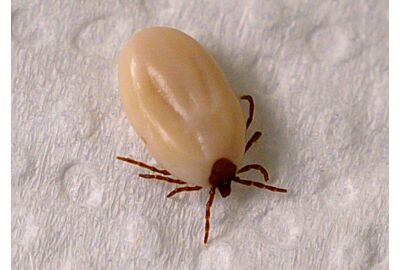Now that the sun is out more often and temperatures are rising, ticks have also reappeared. These parasites, resembling little flat spiders, can sometimes bring disease to you and to your four-legged friend. Below, we will explain where and when these unwelcome guests are most active and, above all, how you can recognise, prevent and combat them.
Hello spring, hello ticks...
Anyone who has a dog has undoubtedly noticed: they are back, those annoying ticks. These parasites live in nature. Just like you and your dog, they love forests, dunes, heathland, meadows, parks and gardens. They prefer to live in high grass, on bushes, ferns and between dead leaves. When you and your four-legged friend pass by, the tick will be rubbing its little hands (or rather its paws). It then takes the opportunity and will crawl on you or your dog to feed on your or your pet’s blood.
Ticks are blood-sucking arthropods belonging to the Arachnidae family. They go through four different life stages: egg, larva, nymph and adult tick.
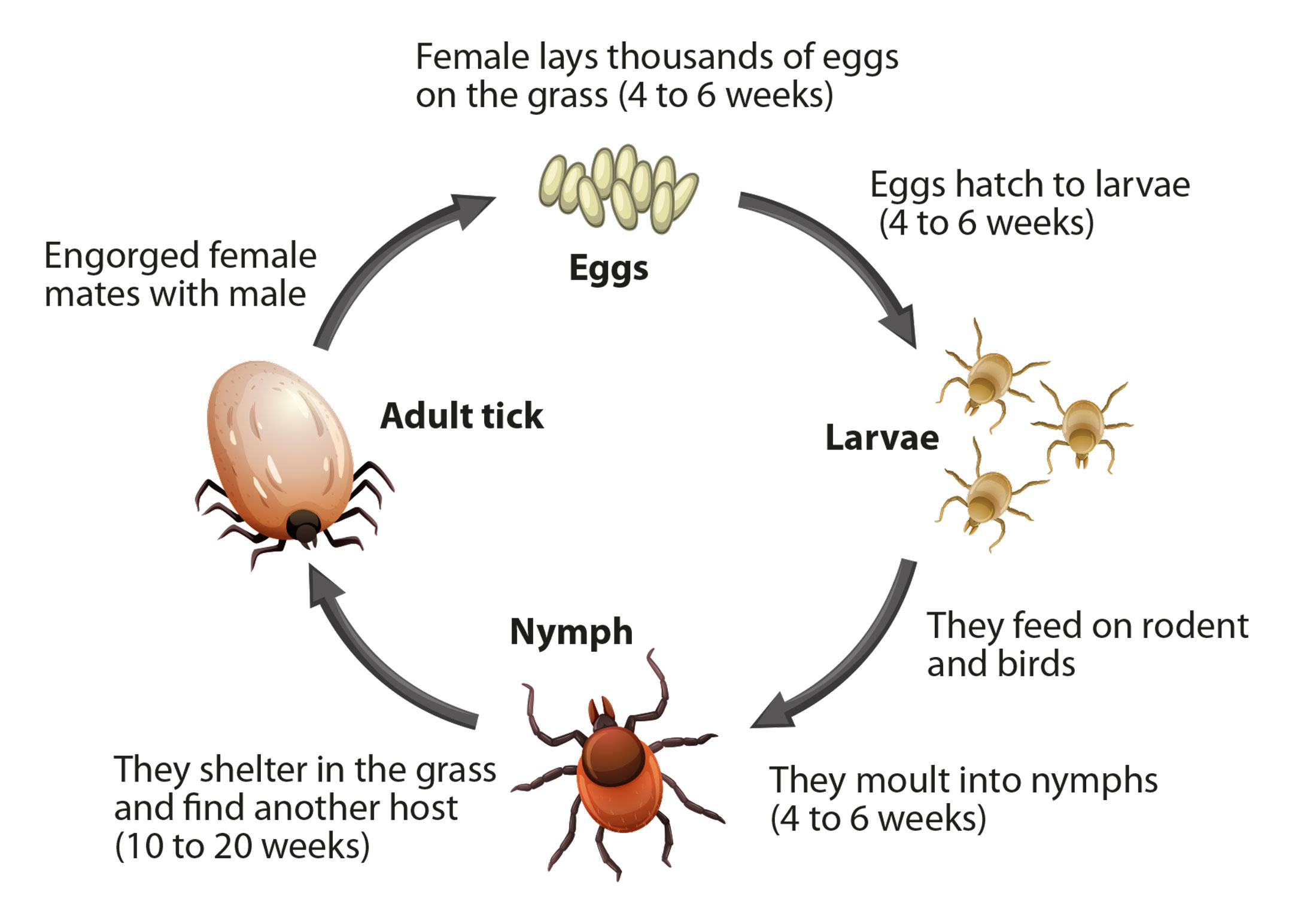
Like spiders, adult ticks have eight legs. Ticks can be active throughout the year provided the temperatures are high enough. Especially after the cold period in spring, they are ready to make our lives difficult again. The number of active ticks starts to increase in March, and they can harass us until autumn (September - October). These ectoparasites can cause irritation, as well as infection and disease. Therefore, it is important that you check your dog and yourself for ticks and if you find any, remove them properly.
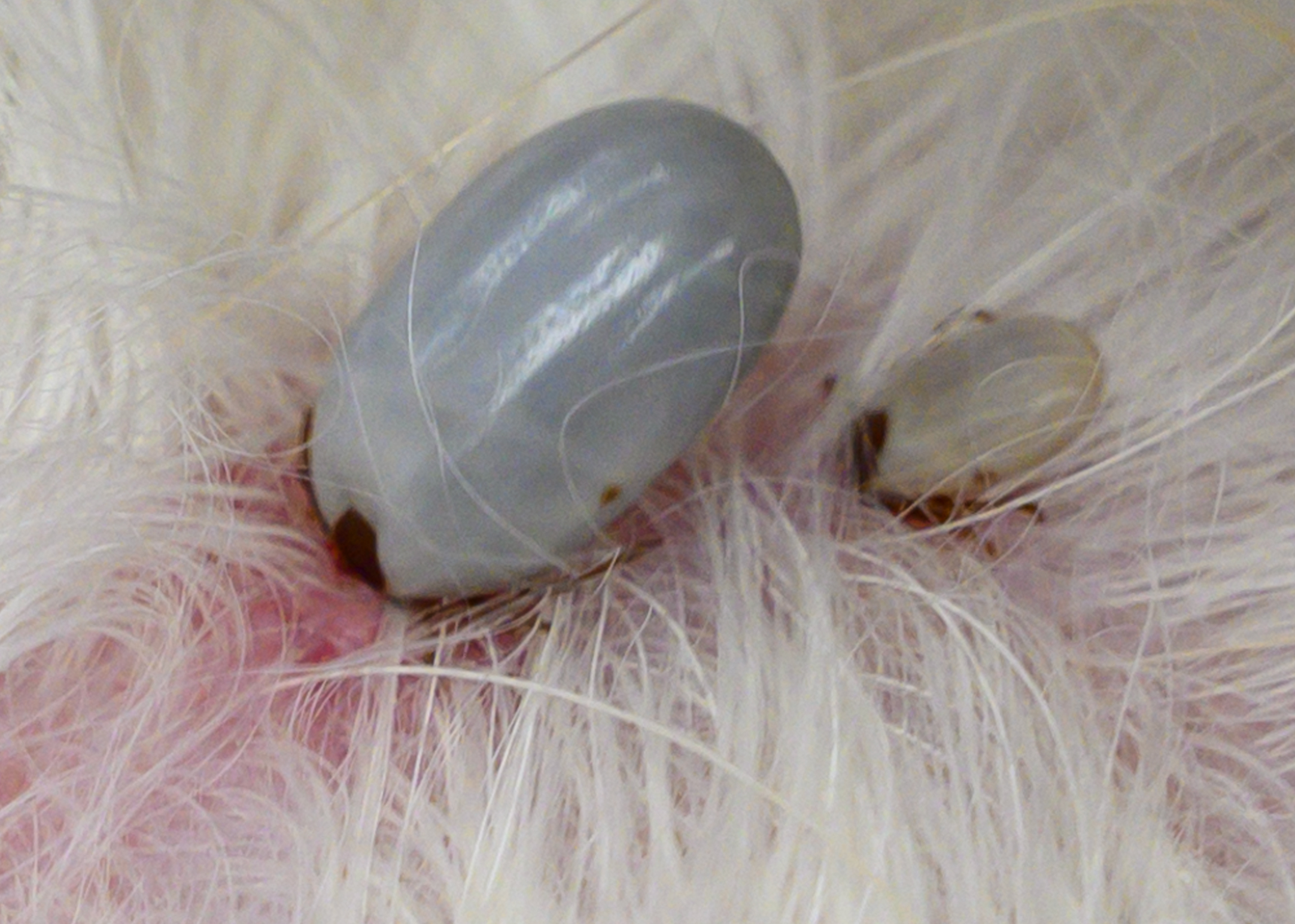
Examine and eliminate
Ticks prefer to crawl on and into warm places. They love the neck, ears, head, legs, groin and armpits of your pet. Of course, they can also occur elsewhere on the body. When you go with your dog to the grooming salon, the groomer will certainly inform you if your dog suffers from ticks. He or she will remove the tick or, if necessary, refer you to the vet. Depending on your dog's lifestyle, you can fortunately take measures to prevent and combat ticks (and fleas).
Does your dog rarely go outside? Even then, it is worth checking his coat and skin regularly. You can do this by using a fine-tooth comb. If your dog has a light-coloured coat, you will normally be able to spot them easily. Don't forget to also check the outside and inside of the ears, as well as between the toes and under the tail. If your dog regularly goes outside, we recommend that you treat him preventively for constant protection. This is especially necessary in the hottest periods of the year when most ticks hatch. Is it always warmer where you and your dog live? Then prevention is recommended all year round. Does your dog live in a region with a lot of ticks, such as wooded areas? Then your four-legged friend is at high risk of ticks and should definitely be protected before you take him out into nature. Of course, it is important to always check your pet frequently for pests.
If you discover a tick on your dog, it is best to remove it immediately, because these dirty critters can cause dangerous diseases! Not all tick bites are dangerous though. About 10 to 25% of the ticks are carriers of a bacterium that can make people and/or animals ill. The most commun condition is Lyme disease. A brain inflammation, Boutonneuse fever, ehrlichiosis and babesiosis (tick fever) can also be a consequence of an infected tick bite. Does a red ring appear around the wound after the bite of a tick? Then this tick is most likely infected with the Borrelia bacteria. This bacterium in turn causes Lyme disease. Symptoms are shortness of breath, fever and paralysis. Do you or your dog suffer from this? Then immediately go to the vet or doctor! If you remove the tick within 24 hours, the risk of infection is fortunately small. Ticks can also cause encephalitis in humans and animals. In about 50% of cases, there is a chance of permanent brain damage. Is one of the symptoms a fever? Then it could also be Boutonneuse fever, a condition that can cause heart inflammation with fatal consequences. Does your dog have a rash, fever and is he also suffering from fatigue or fever? If so, it could be ehrlichiosis, a sometimes-life-threatening disease more common in dogs than humans, similar to the flu. Another disease that occurs mainly in dogs and less in humans is babesiosis. Red blood cells are destroyed in this process and the symptoms include shortness of breath, fever, head and muscle aches, red urine and sometimes anaemia.
Therefore, preventing is better than curing! But how do you best remove a tick? Do not do this with your fingers or with ordinary tweezers. Doing so, there is a good chance that the tick's head will get stuck in the skin, which can lead to infections. It is best to buy a special tick remover or tick hook and have them available at home. Grab the tick with the tick remover.
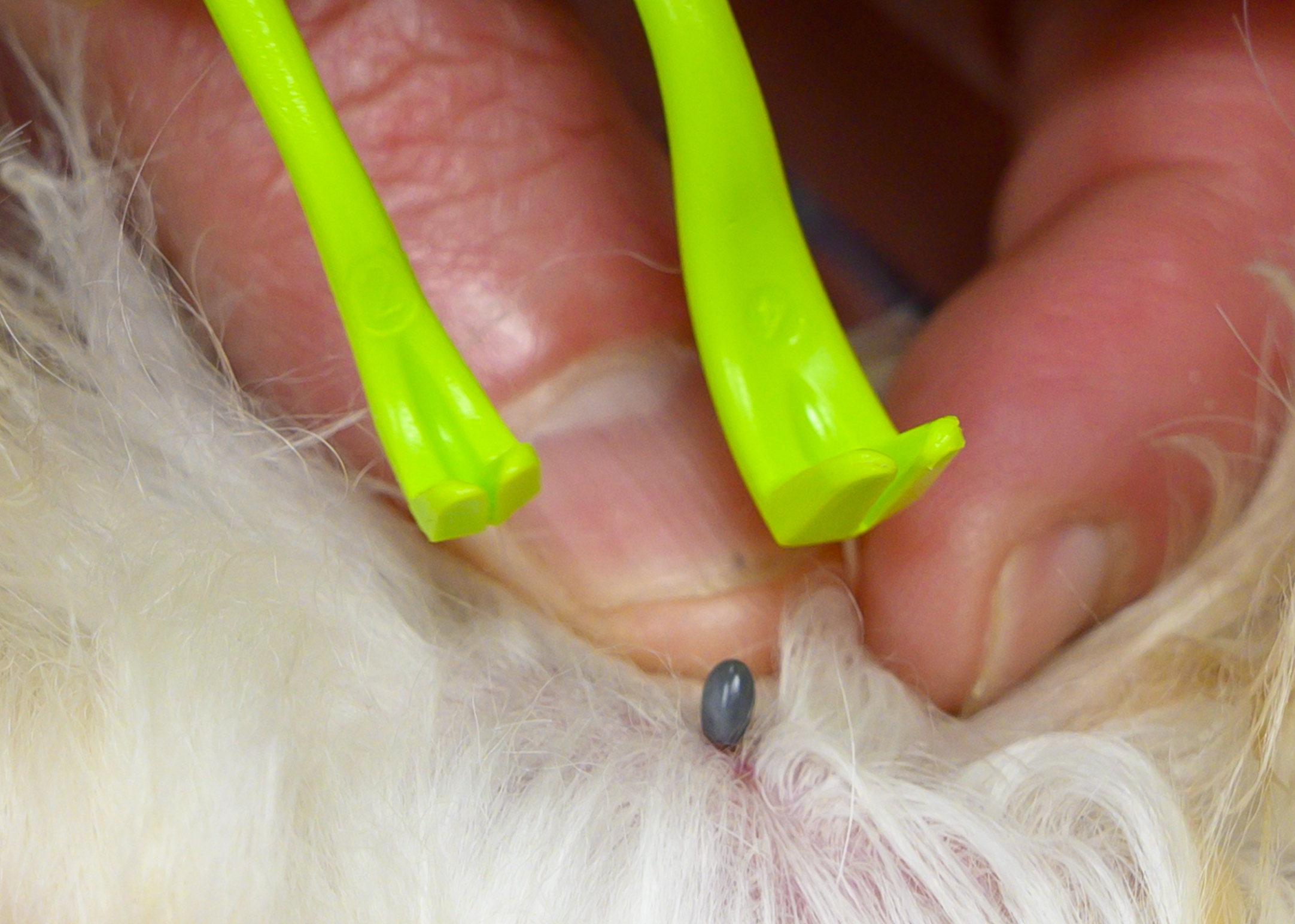
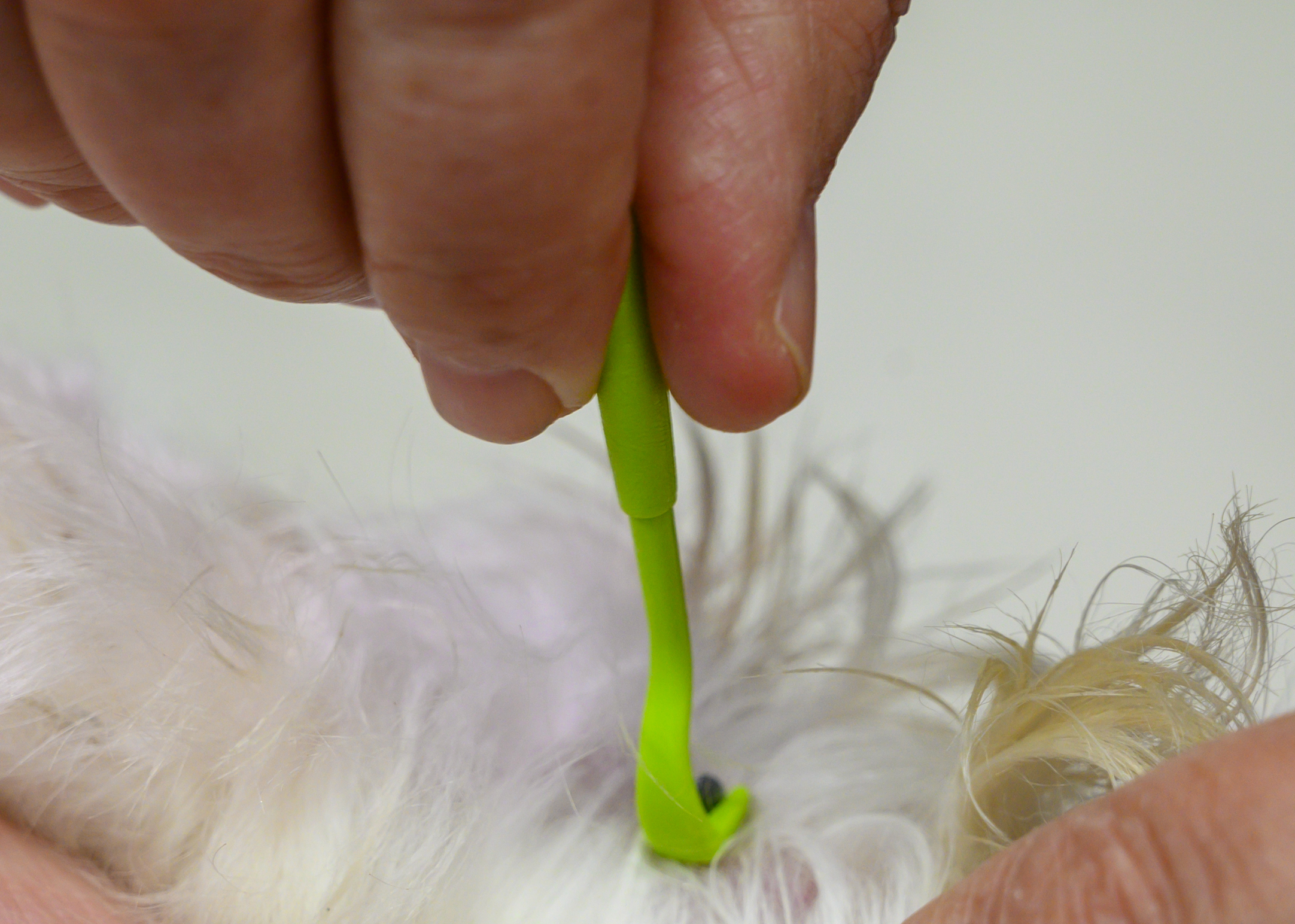
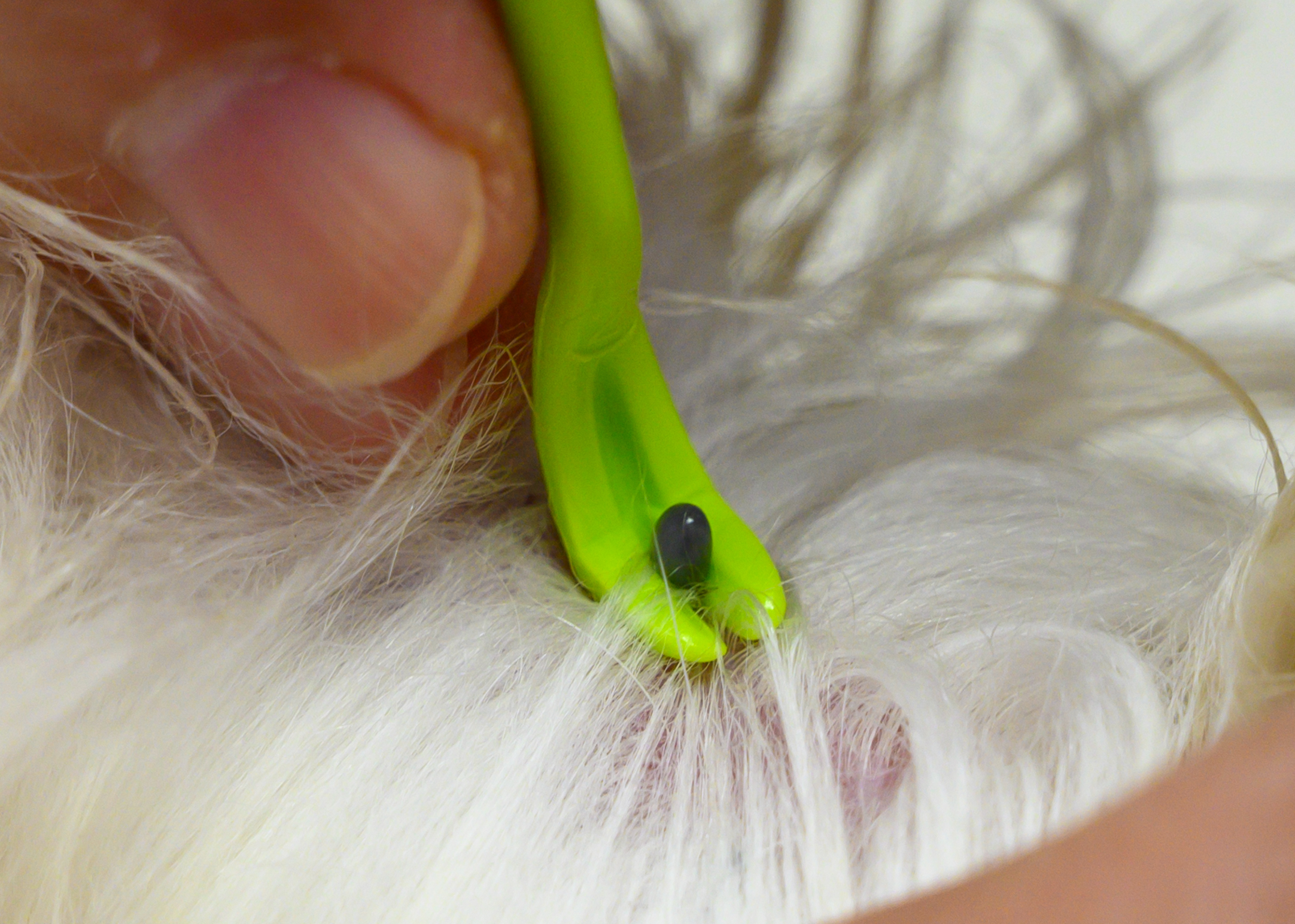
Do this as close to the dog's skin as possible. Then make a twisting movement with the hook until the tick comes loose from the skin. If you were able to remove the tick completely, then there is a good chance that it is still alive. Be sure to kill it so that it cannot strike again! When removing a tick, it is important to make sure that you also remove the tick's head. If the head is stuck, it will normally come out on its own after a while. In that case, however, keep a close eye on it and be sure to disinfect the area around the bite. This way you can prevent later problems such as skin infections.
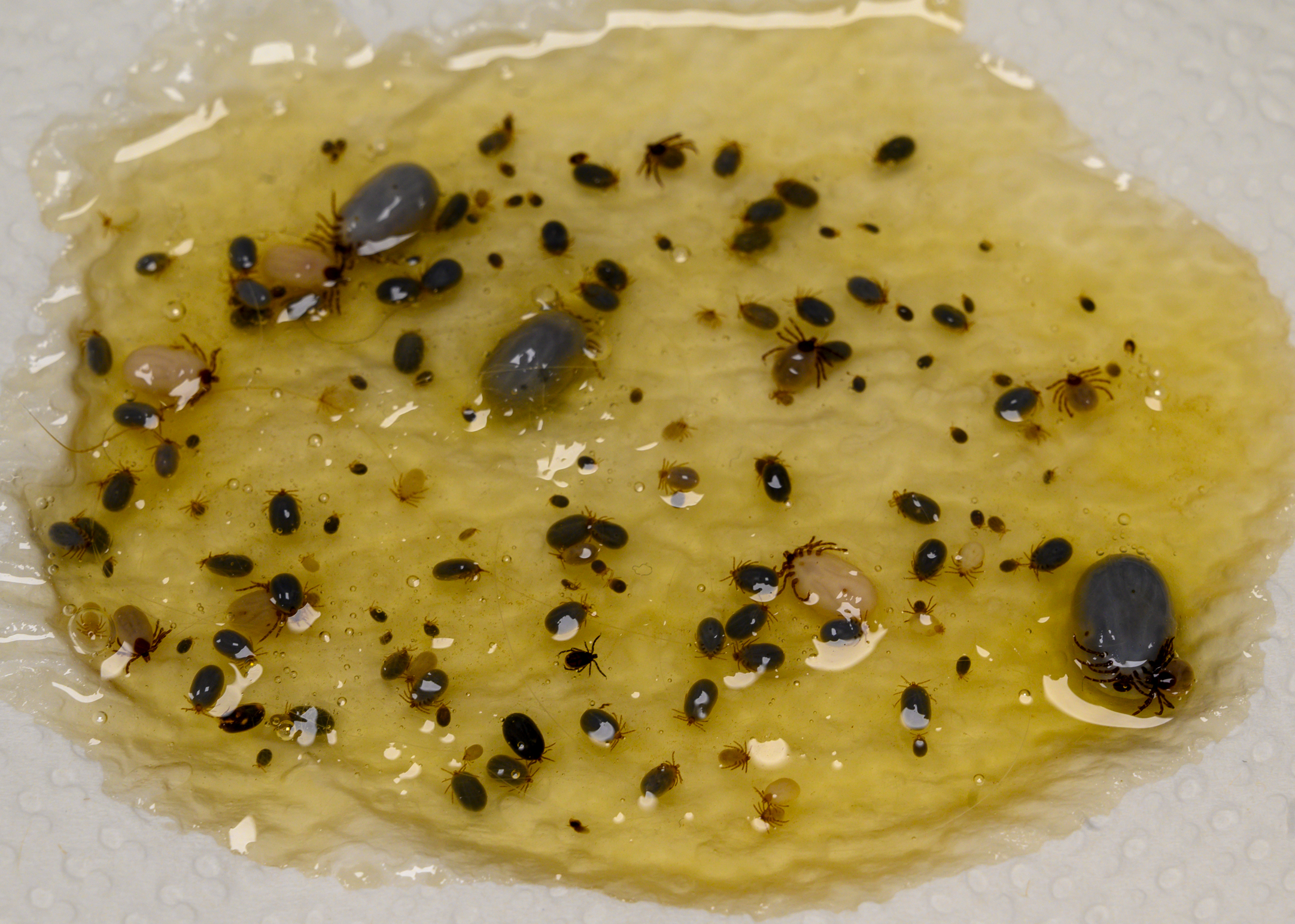
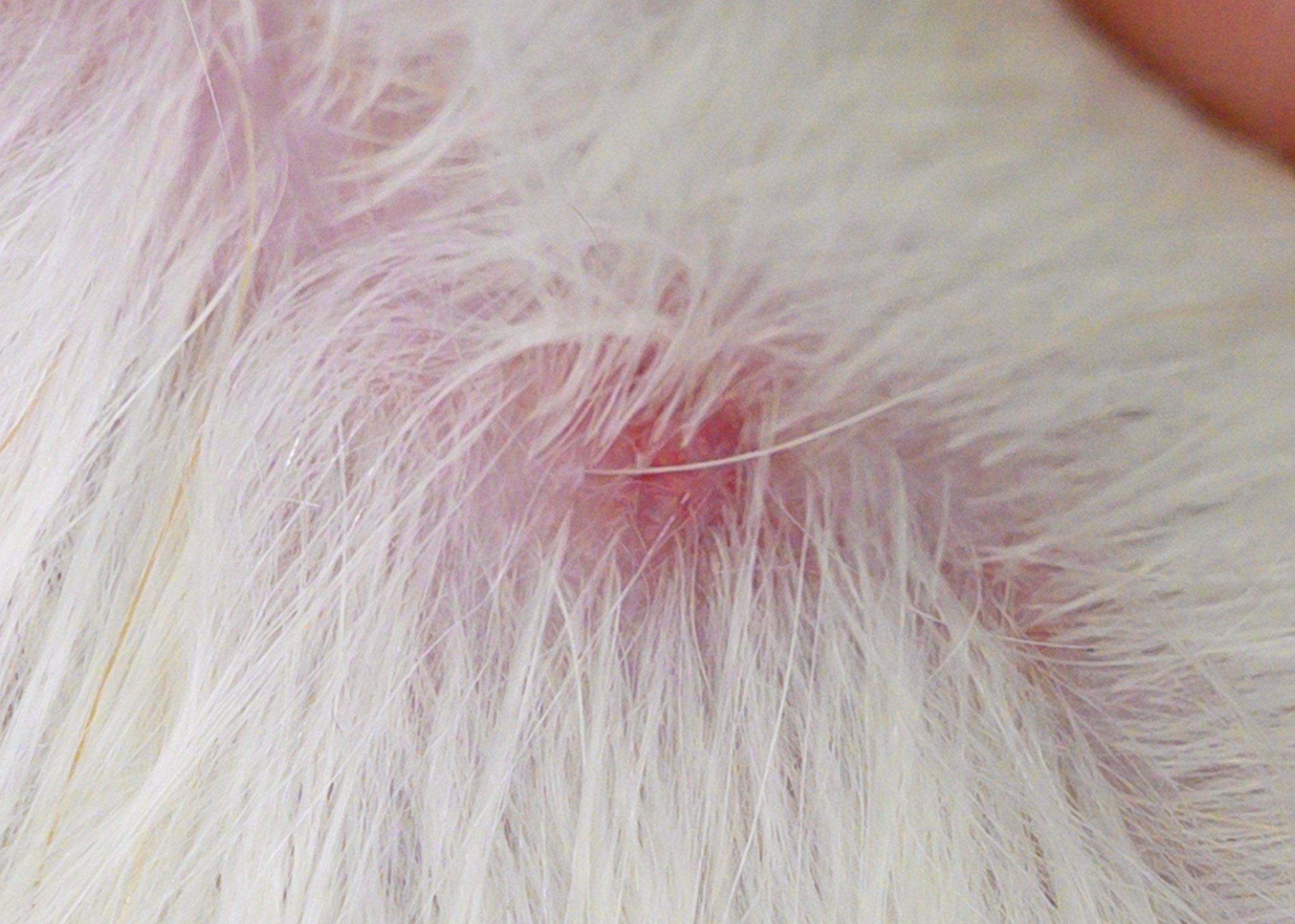
After removing the tick, a bump will appear. No need to panic! It will normally disappear on its own after a while. If your dog behaves sluggishly, has a fever or walks stiffly, it is best to consult a vet quickly for further checks. If your dog has many ticks, this is common.
Can you see the ticks moving in your dog's fur? Then you can simply take them out. They can also fall off the dog, for example after a walk in the woods. Be sure to vacuum your house sufficiently and remove the hoover bag immediately afterwards. Finally, it is also very important to wash your four-legged friend with a professional shampoo against fleas and ticks. Sometimes there are little ticks on the dog, which you can hardly see with the naked eye. By washing the coat with this flea and tick shampoo specially developed for dogs, the ticks will fall off and die.
Ticks on yourself
Since ticks do not only occur in dogs but also in humans, it is important to check yourself and your clothes thoroughly after a walk. Preferably also take a bath or shower and check your own body and that of others, such as your children, from top to bottom. Ticks like warm places, so pay extra attention to the groin, armpits, hollows of the knees, behind the ears and around the hairline. Have they attached themselves to your clothes? Then it is important to wash these at 60 degrees or tumble dry them.
With the above tips, we hope to have informed you properly so that you can prevent and combat these annoying pests. Good luck and above all: have fun walking!

